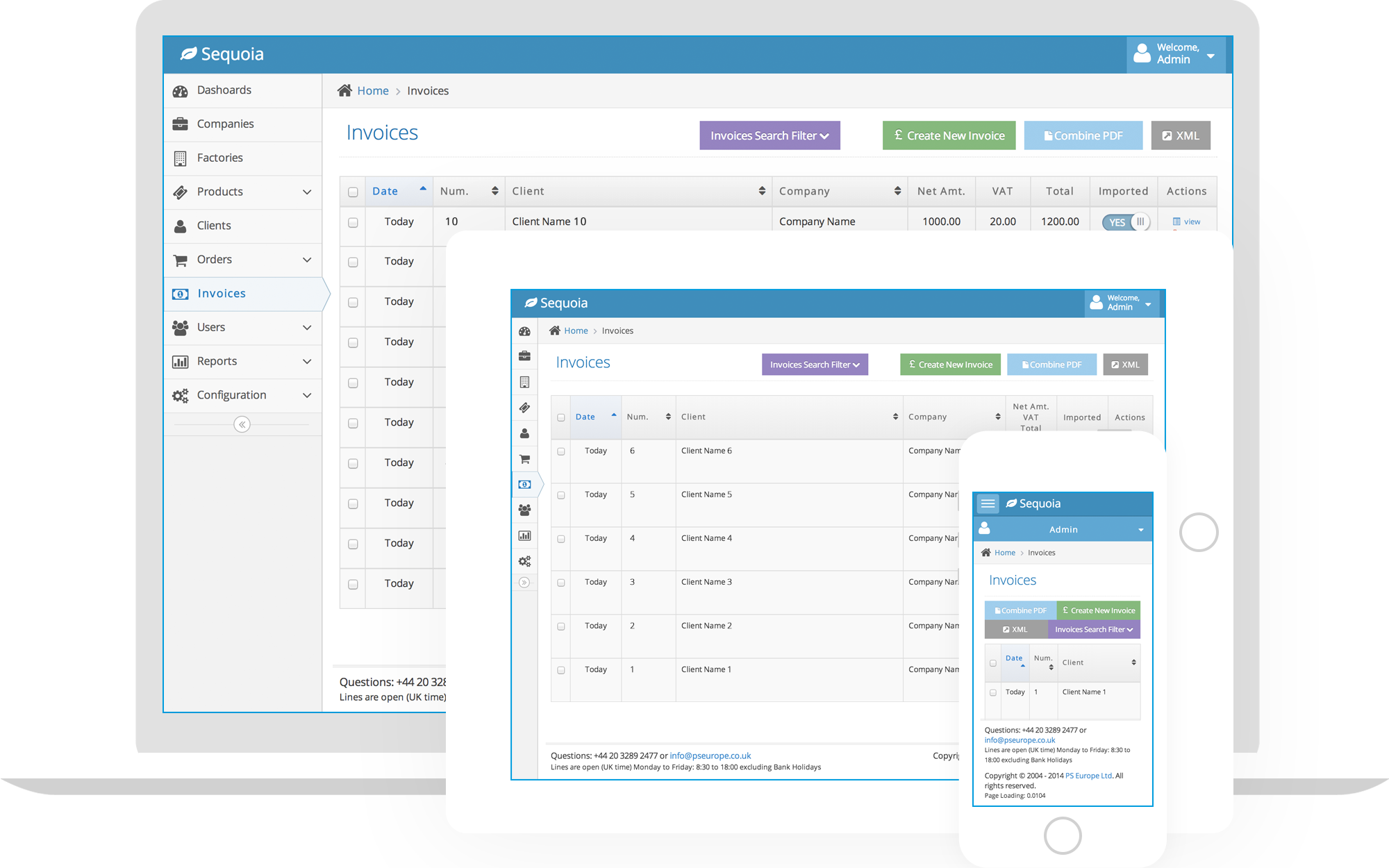Progressive Solutions Europe Ltd, London
Front-End Developer
Development of a responsive web-design for mobile and tablet devices

Development of a responsive web-design for mobile and tablet devices
Development of financial analysis programs
Development of multilanguage educational programs
University of Scientific - Technical and Economic Information
Polytechnic College Communications
The programme Sequoia EPR is corporate information system for centralise procurement department and control the entire life cycle of a transaction from purchase order to payment of the invoice and synchronise with accounting software
Automate repeating operations, standardise documents and switch to paperless working environment. Unlock and understand data of your organisation with the help of wide range of prebuild reports and real-time activity reports. Give your organisation-structured method of accounting for all incoming and outgoing inventory, effective management of the prices & supply chain.

The programme is an analytical tool with the functionality to find and provide the optimum financial strategy, compare different scenarios of economic behaviour, evaluate potential risks and volume of necessary financial resources.
The main feature is an ability to link up independent modules-hypotheses and also an ability of real time synchronous link-up to various data sources and information channels.
The output results can be presented in charts, graphs, tables and text analytical reports.
The programme functionality includes data and reports’ saving, creating screenshots, printing and disseminating results in a wide range of formats and protocols.
There is a wide range of different data converters and database drivers used in the programme to maximize its functionality. Special algorithms for conjugation of linear and logarithmic data are used to get visual comparable results. There is also a function to consolidate and integrate the output results from different order types and time scales. A user will be able to change chart types, colours, display options, scale of all output data and data individual sections. There is a parallel computation used to accelerate all calculations and to be able to use full power of multicore processors.

The Programme is based on fundamentally new methods of learning,
built on current scientific research in the psychology of perception and memory.
All users of our programme are linked up into an overall online network,
where lexical databases, training modules and algorithms, exercises and study results are
being constantly updated. The programme uses the most advanced system computer analysis of the speech and pronunciation.
The programme uses a full multi-language interface by utilising of linguistic resource libraries and vocabularies. This allows the flexibility to switch between interface languages and provide translation from/to any language. Both built-in dictionaries and online translation tools are used.
Independent libraries are used for reading, editing and conversion of different document formats. These libraries do not require additional installation on a user's computer ( f.i. MS Office etc) .
Special optimised structures for translation dictionaries and user data storage are used to maximise capacities for speedy translation and user data management.
Each word and each exercise segments which are sued in learning will have individual log files to store the results of learning, mistakes, reaction time and correct answer search. A personal strategy is being continuously developed based on the log data of each individual user.
Asynchronous and multi-threaded parallel calculations are used in critical and heavily loaded programme modules to accelerate functionality and effective use of computer power.
The programme utilises the most up to date libraries for synthesis and speech recognition. The programme features include an adjustable threshold for quality pronunciation, graphical display of pronunciation spectrum, multiple plays of freely selected audio records. There is automatic recognition and use of the most common encodings and formats (such as mp3, wav , etc) to enable flexible use of audio files in the training exercises.
A set of complex algorithms have been developed to enable selection and exercise preparation of words, grammar structures and sentences, utilising usage frequency, grammar rules, psychological memorising peculiarities and new information perception. Independent analysis modules have been optimized for different languages.
The WPF technology is used for the programme design. This design technology can work on most operation systems including older ones. The technology allows functionality for comprehensive graphic data output and display as well as developing a multi layered information interface.
License protection of the programme is provided by implementing several levels of control and protection with a linkage to hardware, protection against spoofing real dates, user data transfer onto a special server, encryption benchmarks and special independent modules which monitor programme integrity user registration information.
